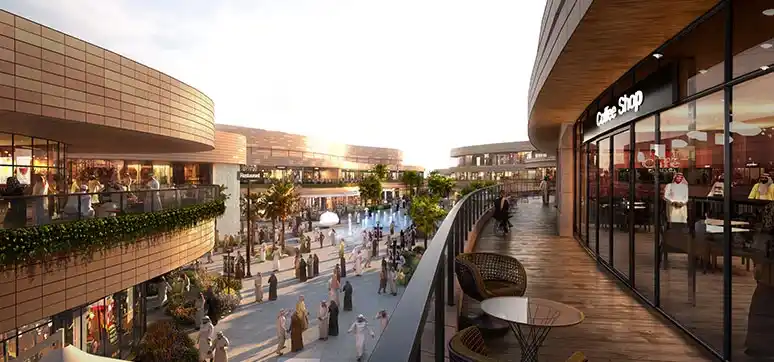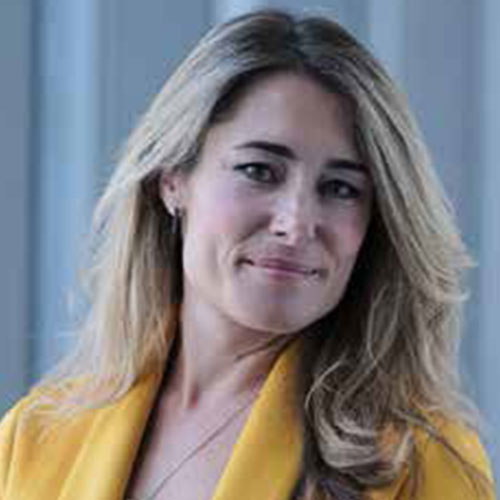Tell us about your practice and design approach?
Gensler is the world’s largest architecture, design, planning, and consulting firm, with 49 offices around the globe. Gensler architecture reflects our knowledge of how people and organisations use and experience place and space. We work collaboratively with clients, communities, and end-users to create buildings that work well on every level, inside and out. Successful buildings capture the spirit of their surroundings, even as they assert their own identity.
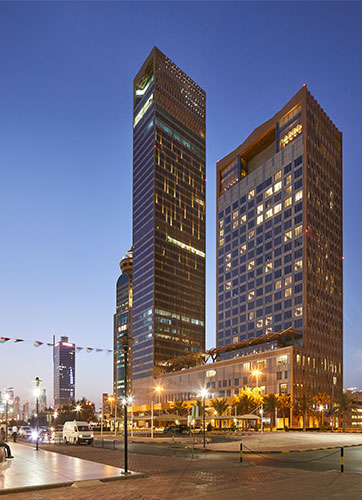
Kuwait The design concept has been developed around a regional architectural tradition, resulting in a contextual building
They are visually appealing, healthy, comfortable, flexible, secure and efficient, a pleasure to be in. And they pay their way, adding real value for their owners and users. Our Middle East studios in Dubai and Abu Dhabi utilise cultural research as both catalysts for community engagement and for new forms of architectural expression. I see architecture as both an enabling social art and a creative cultural dialogue offering new forms of civic identity.
What are the milestones you have achieved to date?
As I developed my career in the UK I was actively involved in working with international government associations and Wood Councils to bring the use of cross-laminated timber (CLT) in design, to the forefront. I’ve lectured in the UK, Canada, and North America, to bring an awareness of this sustainable method of construction and give it the limelight it deserves.
This has been a hugely exciting time. My ambition (particularly for countries that have the raw materials right on their doorstep) is that wood is considered along with steel and concrete as a contender in every building. 14 years ago, CLT had only been used on a handful of small buildings in the UK. Working together with a team of innovative consultants and open-minded clients we were able to design the largest CLT building in the UK in 2009, this was a new built Technology Academy in Norfolk. Since then, we went on to deliver numerous other buildings, from Schools, Universities, Sports Buildings, Student residential blocks, music centres, Drama Studios and pavilions.
Now it’s commonplace to hear of towers reaching 37, and even 39 floors. Clients and consultants can approach the unknown with trepidation, now there are so many awesome examples of this beautiful construction approach using mass timber that the dialogue is persuasive, and the projects speak for themselves. Trees are a net absorber of Carbon. Using wood in our buildings could save 31% of global C02 emissions. It just makes sense.
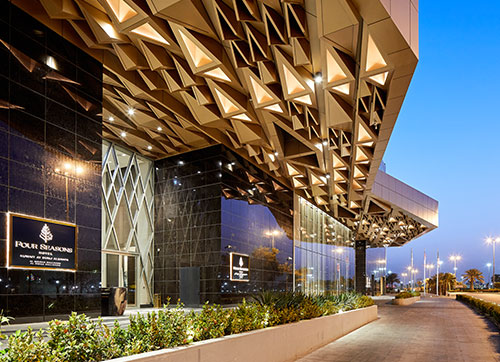
Aside from project-related milestones, I consider my accomplishments as a mentor to be my greatest source of pride. I thrive on working in a team, and in particular, mentoring the younger generation of architects in the studio and outside of the studio. I’ve worked with architecture students at Universities in the UK/US and UAE to support the design studio work, in crits/tutorials and lectures. Watching students, I’ve mentored in their degrees present at their end-of-year shows is an incredible feeling. Moreover, I joined Gensler just before the pandemic in Jan 2020, not only have I become a part of the Gensler culture while we were all working from home, but I am also thrilled to be leading a team of star young designers at Gensler, all working remotely since March 2020 on some extremely unique and challenging architectural projects supporting both our studios in the UAE and several of Gensler’s global projects.
What inspired you to become an architect?
Watching my father’s burning ambition to be one, bought the idea to me. I wanted to study for a degree that was both creative and technical. Architecture always felt perfectly balanced between the two. I am the type of person who likes to be constantly doing things, to see visible progress, and to have something tangible at the end of the effort is hugely satisfying. My day is multifaceted between design and project work, client presentations and ultimately being part of a large team of creatives, bursting with energy, it doesn’t get better than that!
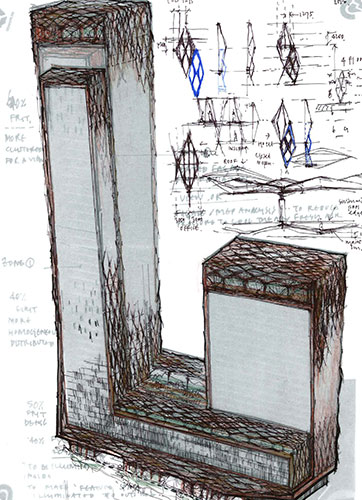
Could you please talk about your projects featuring very innovative and different kinds of façade and fenestration designs (in the Middle East)?
Gensler has extensive expertise working on creative and one-of-a-kind façade and fenestration designs all around the world. Here are a few of my favourite projects:
Four Seasons Hotel, Burj Alshaya Centre, Kuwait City: Appointed to lead the design of this mixed-use development in Kuwait City for Alshaya Incorporated, Gensler developed its design concept around a regional architectural tradition, resulting in a contextual building that successfully represents the Four Seasons brand, as well as the local environment. Composed of three distinct buildings including an office tower, hotel tower, and podium, the development is unified by a traditional Arabian carved wood latticework window treatment that offers significant solar control and air circulation.
This approach integrates the three main elements of the project by wrapping the east and west elevations of both towers and covering large sections of the podium with a Mashrabiya-type envelope. The geometry of the wood shading fins covers multiple building façades, creating a strong, visual distinction from neighbouring buildings while enhancing climatic performance for the occupied spaces. The new 250-room Four Seasons Hotel features two large ballrooms, an expansive pool-level terrace, three restaurants, and world-class spa and fitness facilities.
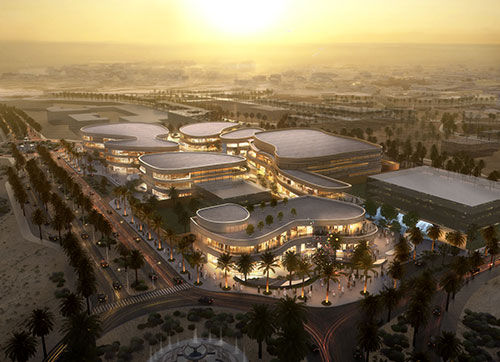
Award by Business Traveller Middle East Awards: 2021 Best Business Hotel in Kuwait:
• Unified Real Estate Development Diplomatic Quarter Mall, Riyadh, KSA: Located adjacent to the eastern gate to the Diplomatic Quarter in Riyadh, Gensler’s design for a new mixed-use development captures the essence of the neighbourhood and the spirit of the city. The façades take their cue from the character of Diplomatic Quarter. The influence of Salamani architecture reveals itself in our contemporary design with a refined palate of elements and shapes such as triangles and narrow vertical slits.
The exterior cladding comprises natural terracotta panels which are richly coloured to match the traditional stone façades of the surrounding neighbourhood. The façade surface begins as a relatively flat surface on the façades facing the road but transforms into undulating strata bands in the central courtyard space. This undulation and subtle variety of colour/s throughout the façade promotes continual visual movement throughout the project.
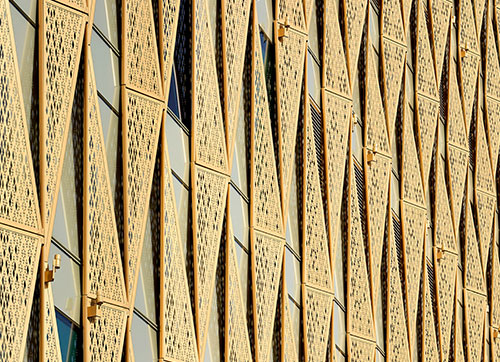
Award by Design Middle East Architecture Leaders Awards: 2021 Highly Commended Retail Project of the Year
Primark, King of Prussia, Pennsylvania: The U.S. flagship for this Dublin-based, fast-fashion retailer reflects the brand’s Irish roots, expressed through industrial elements accented by Primark’s traditional aqua and neon. The exterior façade features LED windows displaying both moving and static imagery; inside, a huge digital billboard and 32-screen “digital roundabout” engage shoppers with marketing campaigns and fashion trends from around the world.
Custom chandeliers of tangled neon hangers contribute to the store’s quirky character. As a counterpoint to the bright, bustling sales floor, fitting rooms are designed as quiet sanctuaries. Six additional locations are planned, the design of which will stem from this prototype.
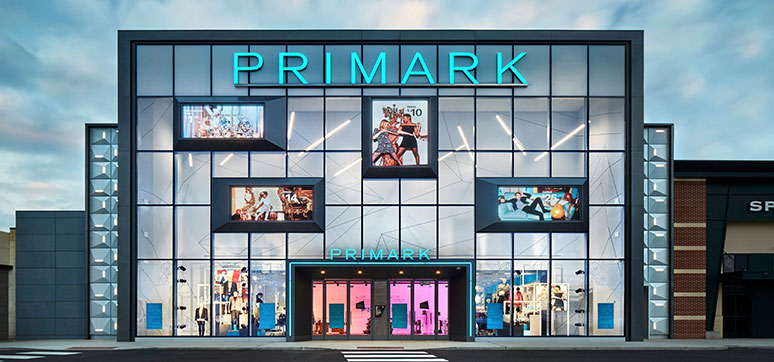
Award by Retail Design Institute: 2016 International Store Design Competition – Winner, Soft-Line Specialty Store As an architect what sustainability means to you?
Sustainability for me means a compassionate responsibility for the impact that we have on the Earth and we stand together. And as architects we must show ecological awareness, therefore a building’s functionality must be tied to its relationship with the environment through its appearance. A truly sustainable architecture project must be approached holistically: from technical aspects to environmental, social, cultural, and even political ones.
Sustainable architecture means being able to satisfy consumers’ requests, taking the time and natural resources needed into consideration from the very early stages of the project, entering the context in the most natural way possible, planning ahead by making the space and materials employed completely reusable. Sustainable buildings must define the way in which the people who inhabit them live – as an architect you can start that process for people, and then you hand it over… your impact in this process is just the starting point.
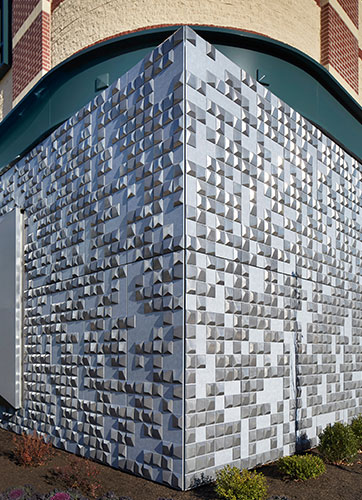
How do you go about choosing the material of the façade and cladding?
For me, architecture is all about sensitivity. By this, what I mean is that a building should not necessarily be polite in its context, I believe that it should have a relationship with it. The façade is that “stitch” into the context, and so I would select a façade and cladding in the first instance by what is available locally, and how can that raw material be utilized in a modern way. A good example is the magnificent Georgian architecture in the bath is befitting because the stone is extracted from beneath it. An important feature of bath stone is that it is a freestone, that is one that can be sawn or ‘squared up’ in any direction, unlike other rocks such as slate, which forms distinct layers.
The fine-textured limestone has warmth and character, and on a sunny day, sunshine illuminates every stone façade in the valley. It is not rocket science, nature has the answers, and some of the best building façades are successful because they listen to their context.
At Gensler, we believe that climate change continues to be an urgent challenge, affecting everything: quality of life, biodiversity, national security, the economy, and especially public health. Design can help to tackle these challenges – and enrich the human experience, promote wellbeing, and ensure safety. We release our annual “Impact by Design” publication every year focusing on strategies for climate resilience, rethinking the built environment to adapt to and prepare for a changing world.
In the latest edition of “Impact by Design” (2020), we have explored how digital and robotic technologies will create the optimised prefabricated building façade and how our project Adobe North Tower in San Jose, has been designed to have public spaces that have more transparent façades that provide a view into Adobe’s culture and out over the city, while work areas benefit from reduced glass and external hoods to enhance performance and comfort.
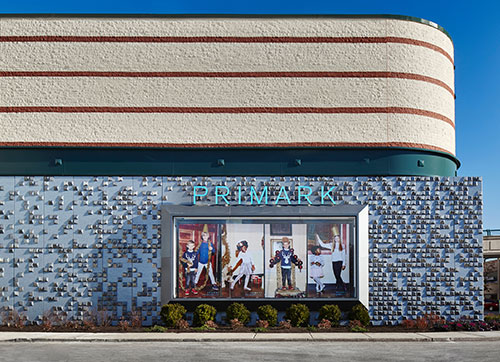
According to you, where is the architectural segment is heading in the Middle East and what are the major challenges in the architectural segment in the Middle East?
I think it is an exciting time. The Middle East was, and still is, a ground for continuous enrichment through new concepts and ideas, and the products of contemporary architecture and urbanism are no exception. The colonisation period created several architectural and urban dichotomies, exploring local architectural roots and the native traditions of Arabo-Islamic architecture in order to forge new styles.
I strongly believe that the Middle East has successfully carved a unique and distinguished position for itself when it comes to global design and architecture trends. Architects have experimented on a large scale to develop attractive metropolitan cities that compete as world destinations.
The traditional character that is unique to every region has become somewhat diluted against what is now defined as contemporary. Where contemporary architecture has been successful, is where ‘contemporary’ is grounded to ‘locally’. In order for our cities to thrive and celebrate their uniqueness, we must have an increased awareness of a regionally influenced contemporary style.
We are currently working on a few projects in the Kingdom of Saudi Arabia which have required research and reference back to the Najdi vernacular, these cultural references help to preserve the personality and the spirit of the region in place.
Much time is spent developing new plots in our cities, and I think more time and effort could be spent stitching together these plots. The connecting spaces must not be forgotten, they are vital to exploit the experience of the user, to create humanitarian and considered landscapes that invite and enable activity. For instance, when we stop thinking about using cars to get from A to B in our city, we start thinking about the alternatives, and those alternatives can shape a new model, looking at micro experiences which connect a plot to another ingeniously, rather than a road between plots, what else can happen there?
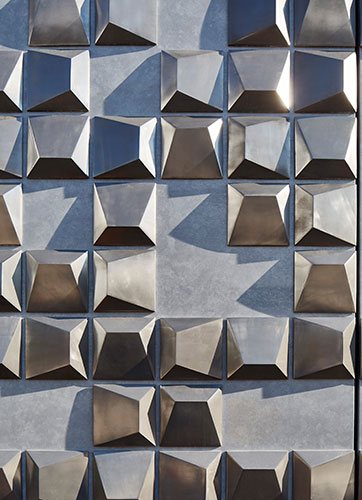
What opportunities do you see for the architects in the region?
I see the biggest opportunity in crafting a new way of sustainable design which is relevant to the region. We are seeing some adaptive reuse which I think is hugely important, and I commend developers who are looking at the possibilities here. Apart from slowing down urban sprawl, the cultural heritage of buildings is being maintained.
In communities with important architecture which serves to represent a period of history for that city, adaptive reuse is a form of historic preservation. It restores culturally significant sites that would otherwise be left to decay or demolished to make room for new buildings or parking lots. I really enjoy seeing visible layers of history within a building. That building needn’t be the most beautiful, but it gains a patina of history that gives it another layer of interest and new legitimacy, born with new life.
I look at some of the 1970-1980s mid-rise architecture in Abu Dhabi and it really represents an era and era where I was not around to appreciate the architecture of the newly developing embryotic capital. If you take that away or leave it to fall apart, you lose that layer of insight, if you transform it in some clever way, then you empower it all over again.
What are your views on the future façade and fenestration technologies as well as materials?
Undoubtedly the future façade is an adaptive one. Adaptive façades can be defined as building envelope elements with thermal and solar and visual properties which vary in time, either passively or owing to active control. The aim of an adaptive building envelope element is to improve the energy performance and comfort in the building under varying outdoor conditions, indoor conditions, and user requirements. In particular, in the Middle East, this type of façade makes a lot of sense. I find the idea of being able to generate electricity through solar glazing, whilst being able to control dynamic shading really exciting.
What is your advice for young and upcoming architects?
I have got many snippets, here are a few: When you are an architect and you tell people what you do, you will often get responses like “Oh… that is cool!” Or “I wanted to be an architect when I was growing up”. I feel extremely lucky to work in a profession that is my passion and one that is highly respected.
You have worked so hard to get to where you are, realise your worth. Your skillset is absolutely current and relevant to the industry we are all in, you have different skills to those in senior positions, and that’s why you have an important place within a team. You can, and someday you will learn everything they do, but, right now showcase your fresh ideas, that prowess of visualisation skills, and the energy and enthusiasm you can bring to a team.
Spread your knowledge. Mentorship is a two-way street. Are you a Grasshopper wiz? Then give your office tutorials. Are you a sustainability guru? Then organise a LEED study group. Your goal should be to spread your knowledge as far as possible.
You will elevate your firm and highlight yourself as a team player and leader. Public speaking is an invaluable trait for an architect. Take all the opportunities you can to present, even if it is just internally to your studio. If you have an important meeting, rehearse your presentation. After the presentations, ask your peers for a critique of your performance. And avoid ‘archispeak’, as this just annoys clients.
